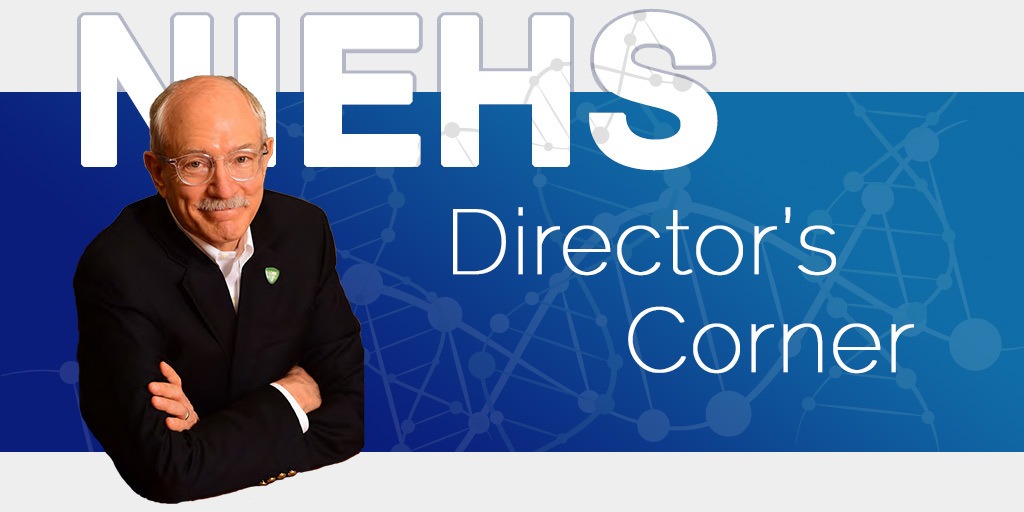In 1972, three years after the founding of NIEHS, the institute launched a publication to share knowledge about what at the time was an emerging field — environmental health sciences. The journal, called Environmental Health Perspectives (EHP), would release more than 100 monographs about various symposia and conferences in the two decades that followed.
By the turn of the century, EHP had significantly expanded its offerings and international reach, publishing peer-reviewed research, editorials, commentaries, reviews, and news. Today, the journal is regarded as a premiere scientific publication, spanning disciplines including experimental toxicology, epidemiology, exposure science, and risk assessment, among others.
As EHP approaches its 50th anniversary, Editor-in-Chief Joel Kaufman, M.D., is spearheading initiatives that I believe will further strengthen the journal’s reputation and ensure that it remains a top scholarly destination for years to come. From streamlining submission processes and engaging early-career researchers in the life of the journal to enhancing diversity efforts and bolstering its editorial team, EHP is taking steps to widen its influence.
Recently, I spoke with Kaufman to learn more about those efforts and his thoughts on hot topics such as preprint servers — which publish non-peer–reviewed research to make findings immediately accessible — and how scientists can best incorporate health disparities analysis.
Kaufman, who took the helm of EHP in February 2020, is a physician and world-renowned epidemiologist who maintains a research program at the University of Washington. He was elected last year to the National Academy of Medicine for his work into how exposure to air pollution can lead to cardiovascular disease. Talking with Kaufman, one quickly finds that he possesses boundless curiosity, making scholarly publishing a perfect venue for him.
Author-friendly submission policies
Rick Woychik: Since becoming Editor-in-Chief, you have initiated several efforts to enhance EHP operations. Can you expand on those?
 “Editorial work is a fun part of the research enterprise,” said Kaufman. “EHP is especially interesting because it covers a broad swath of science, and I’m always learning new things.” (Photo courtesy of Joel Kaufman)
“Editorial work is a fun part of the research enterprise,” said Kaufman. “EHP is especially interesting because it covers a broad swath of science, and I’m always learning new things.” (Photo courtesy of Joel Kaufman)Joel Kaufman: When I joined the journal, it already was on firm footing and well regarded, but we heard loud and clear from stakeholders and researchers that we needed to streamline some of our editorial processes. We proactively addressed those concerns because we want to be the first place that environmental health scientists look to publish their most interesting work.
We instituted several author-friendly practices, including providing more timely notice about publication decisions. We are very selective in accepting submissions, with less than one in five papers sent out for review and less than one in 10 submissions ultimately being accepted. Those facts pointed to some clear changes we could make.
For example, we now have a process to ensure that decisions about whether a paper will be sent out for review will occur within 10 days. So, if we determine that a submission is not a good fit, it will not be held up by EHP, and authors can then quickly pivot and pursue publication elsewhere. In that same vein, once a paper is sent out for review, we have instructed staff editors, handling editors, and external reviewers that we want initial decisions made within six weeks.
The pandemic has posed a challenge to getting timely reviews, but I am happy to report that our decision times are now quite a bit shorter. Due to its commitment to scientific rigor and full, transparent reporting, EHP will never be the fastest journal to publication, but we are working hard to make things faster and less painful.
Also, we will not hold back a paper from review if its formatting does not perfectly align with EHP editorial style. We do not want people to spend an enormous amount of time on that aspect of publication, especially on the front end of the process. That work can come later, after we decide that the paper is going to need to be revised in response to reviewers’ comments.
Recruiting scientific ambassadors
RW: I understand that you also recruited highly regarded deputy editors both to ensure that manuscripts meet EHP standards and to entice more researchers from more disciplines to submit papers. What would you like to share with Environmental Factor readers?
JK: In the past, a small group — the Editor-in-Chief and an internal editing team — triaged incoming submissions. They would determine what would be sent out for external review and what decisions to make about papers that had already been reviewed. To get more expert eyes on submissions and to better engage researchers from key disciplines of environmental health sciences, we recruited three deputy editors from academic institutions.
Those individuals — Dana Barr, Ph.D., from Emory University; Manolis Kogevinas, M.D., Ph.D., from the Barcelona Institute for Global Health; and Paige Lawrence, Ph.D., from the University of Rochester — are global experts in exposure science, epidemiology, and toxicology, respectively, and all have great editorial experience. They not only improve our workflow and the quality of our review processes but also serve as ambassadors to their disciplines to help make sure the broader community knows that we are interested in their work.
 (Image courtesy of NIEHS)
(Image courtesy of NIEHS)We are seeing more submissions and publishing more high-quality research, including in experimental science and toxicology, working to dispel the notion that EHP only publishes epidemiological research. We still see plenty of epidemiology papers, but we want people across all environmental health sciences disciplines to know they can submit to EHP and that they will receive a fair shake.
By the way, we also are interested in publishing more papers on the relationship between climate change and human health, and what mitigation strategies can be adopted to reduce harm. We plan to work with top researchers in the field to make it clear that we are interested in publishing work on this topic. The number of climate change-related submissions we receive is still relatively small, but going forward, we would like EHP to be seen as a go-to journal on this subject.
Mentoring early-career researchers
RW: Are there any other changes to EHP operations that you would like to discuss?
JK: I should note that we have an amazing group of associate editors who are more engaged in the journal, and they are now welcome to join one of our weekly editorial meetings. We hold two weekly editorial meetings, one with the deputy editors, where we look at the whole sweep of papers that have come in and make sure we are all on the same page about decisions we make.
In addition, we are developing an initiative for early-career researchers to engage with the journal through both mentored reviews and participation in our editing and science communication efforts. To plan this, we recruited early-career scientists from academia and government to be advisors to the journal, and staff meet regularly with them to discuss strategy and other aspects of our publication.
Tackling health disparities, increasing diversity
RW: Can you talk about the journal’s work related to diversity, equity, and inclusion?
JK: EHP is committed to addressing environmental health disparities and potential racism in publishing practices. On the science side, we developed the Environmental Racism Collection. We want to make it clear to authors that we are interested in publishing work that draws attention to environmental injustice, particularly as it relates to racial disparities in exposure to unhealthy environments or effects of racism on environmental health.
 The Environmental Racism Collection is one example of the journal’s efforts to attract more submissions that incorporate thoughtful analysis of racial health disparities, noted Kaufman. (Image courtesy of NIEHS)
The Environmental Racism Collection is one example of the journal’s efforts to attract more submissions that incorporate thoughtful analysis of racial health disparities, noted Kaufman. (Image courtesy of NIEHS)Also, we will not accept papers that assume a genetic basis as the only explanation for racial health disparities. If a genetic explanation is proposed as the sole reason, we ask authors to frame this in terms of genetic ancestry rather than race, which we believe is a social construct. We want authors to think about whether non-genetic factors may underly differences between groups and especially whether structural racism is playing a role.
In terms of publishing practices, we are working to diversify the talent pool that contributes to EHP, including our editors, reviewers, and authors. Our first step is to collect demographic information to determine whether we are moving in the right direction. Change will not happen all at once, and this will be an ongoing effort. However, I and the rest of EHP staff are committed to advocating greater diversity across scientific publishing.
Preprint papers and peer review
RW: As the Editor-in-Chief of a prominent scientific journal, what are your thoughts on preprint servers, and what role do you think they should play in scholarly publishing going forward?
JK: That is a great question. At EHP, we are committed to rigorous peer review of scientific evidence, and we believe that the peer review process remains critically important in determining the highest quality, most believable science. That said, it has become increasingly clear that there is a need for rapid dissemination of research findings, especially when major public health issues are involved, such as during the COVID-19 pandemic.
EHP now accepts papers previously published on preprint servers and encourages researchers to submit them if they want rapid dissemination. We offer a mechanism through two servers, bioRxiv and medRxiv, that allows research published there to be transferred to us with the click of a mouse. Preprint platforms in no way substitute for peer review, and we have seen a lot of lousy science crop up. However, we recognize that they are a new and important way of quickly getting key information into the public domain, so we think it is appropriate for authors who publish on those servers to then submit to us for peer review.
(Rick Woychik, Ph.D., directs NIEHS and the National Toxicology Program)
Source link
factor.niehs.nih.gov



